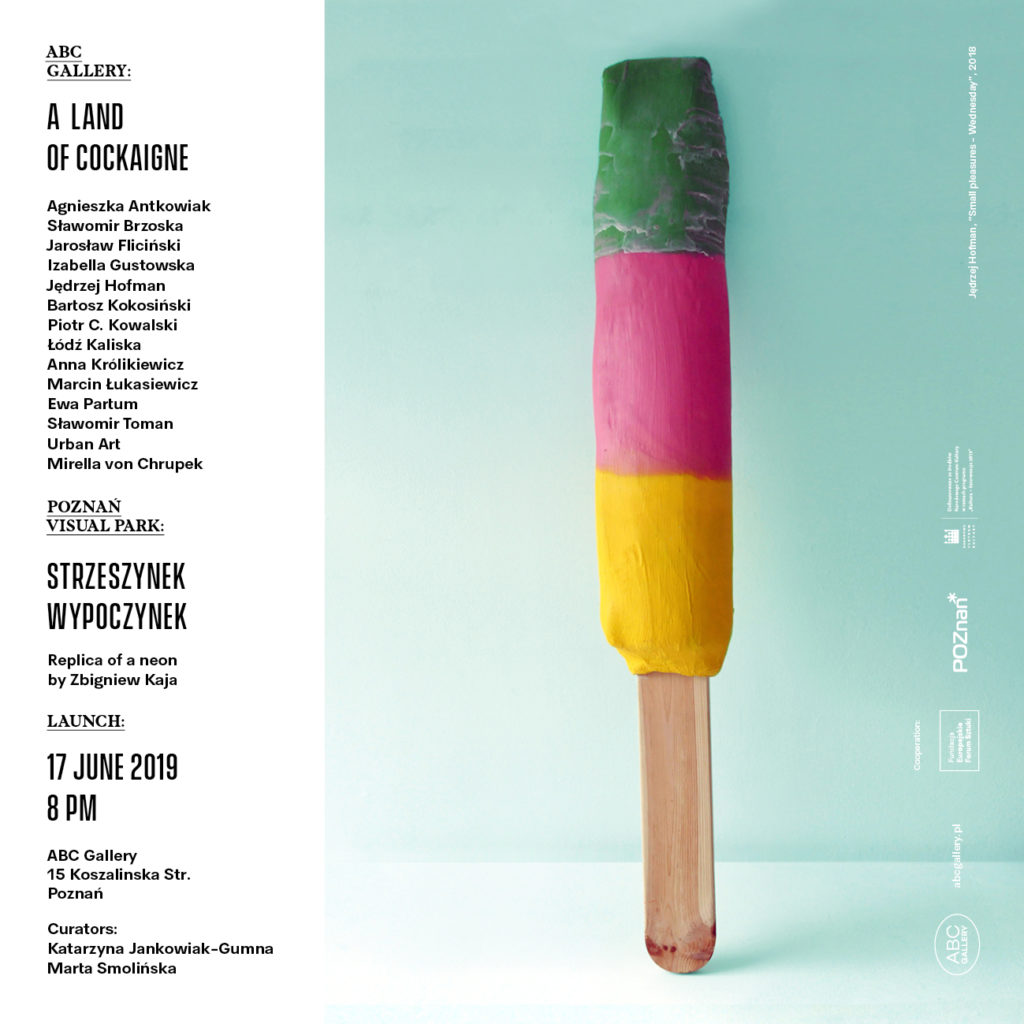Wojciech Zubala “Odpryski rzeczywistości”
Curator: Katarzyna Jankowiak-Gumna
Vernissage: April 25 (Friday), at 18.00
MBWA Gallery Leszno, 5 Leszczyńskiego St.
Exhibition open until May 31, 2025.
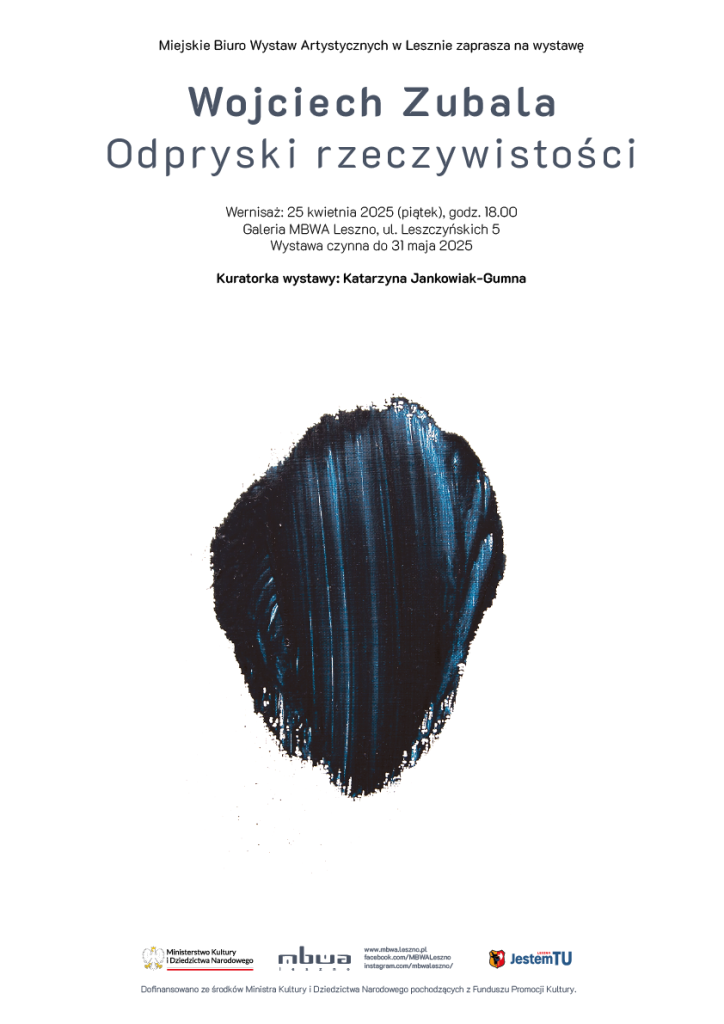
April 17, 2025
Wojciech Zubala “Odpryski rzeczywistości”
Curator: Katarzyna Jankowiak-Gumna
Vernissage: April 25 (Friday), at 18.00
MBWA Gallery Leszno, 5 Leszczyńskiego St.
Exhibition open until May 31, 2025.

April 17, 2025
ABC Gallery will be closed on Friday, April 18.

November 13, 2024
October 29, 2024
Mirella von Chrupek
Beautiful Aliens
Exhibition launch: Tuesday, November 12, 7 pm
ABC Gallery, Poznań, Koszalińska 15
Beautiful Aliens is the most recent series of digital photomontages by Mirella von Chrupek, an artist whose successive series of works, photographs, collages, and famous environments installed in urban display cases excite both the public and art critics. The common denominator of this diverse oeuvre is the tender irony and grotesqueness with which Mirella von Chrupek communicates her understanding of reality.
Beautiful Aliens is based on portraits of eminent, renowned, and glamorised actresses taken from Film and Ekran magazines from the 1970s. The artist has uniquely transformed the cover images of movie stars; their faces are both recognisable and alien, still beautiful yet strange, intriguing yet unfamiliar. Beautiful Aliens is a story about our fascination and attraction with the unknown, which simultaneously arouses anxiety or even fear.
May 14, 2024

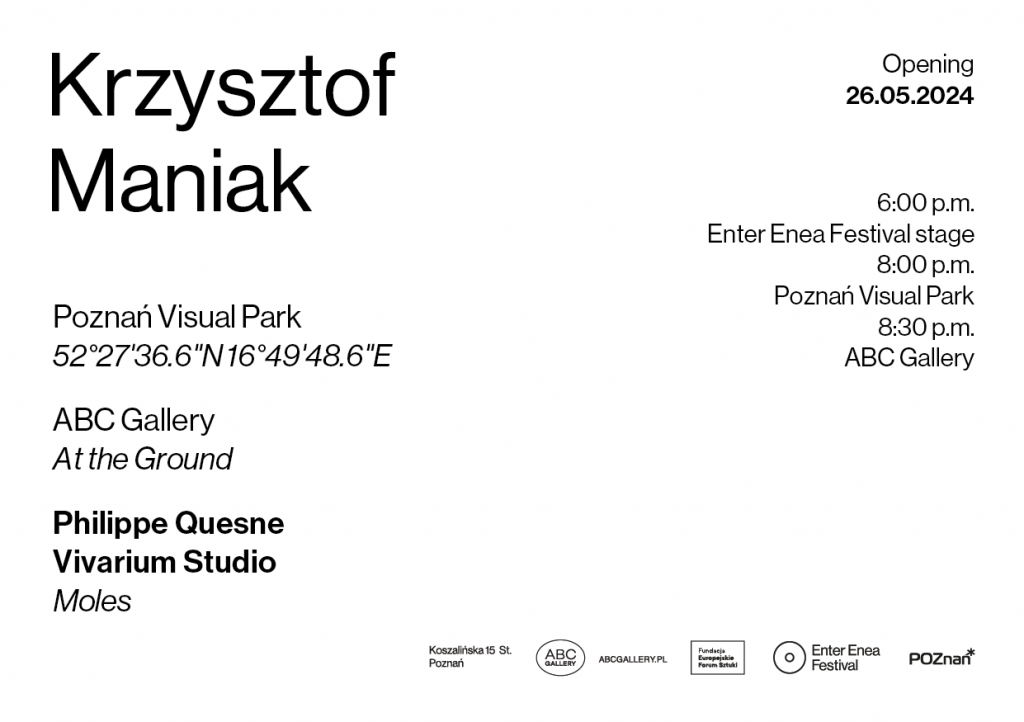
March 13, 2024
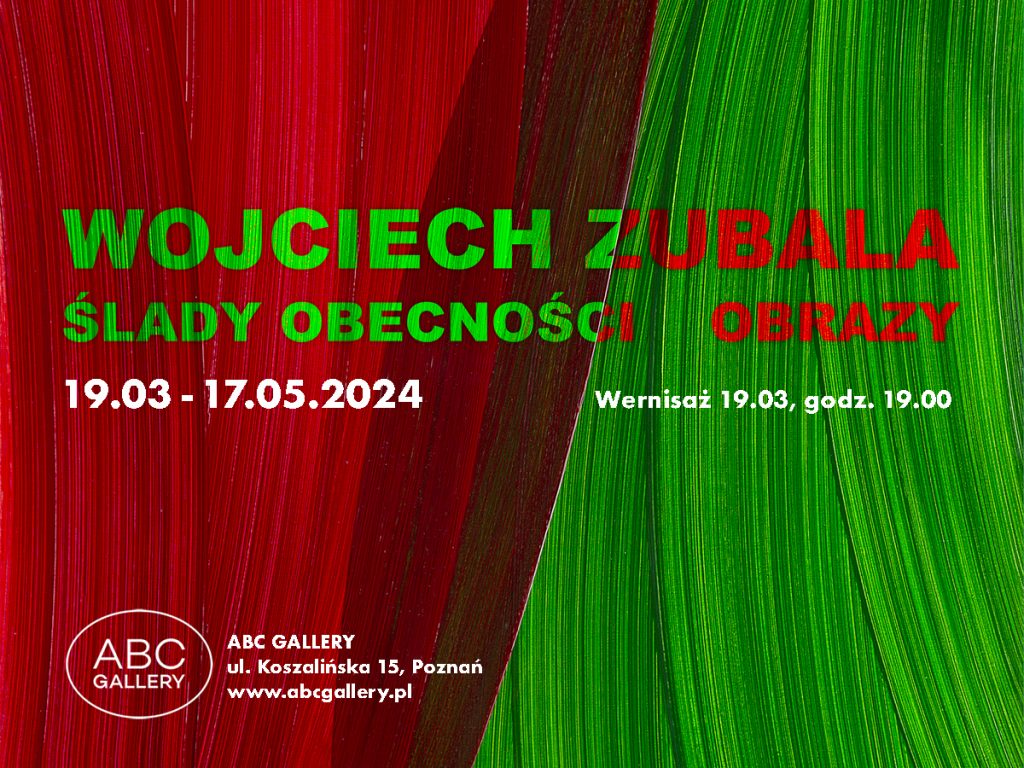
January 2, 2024
MICHAŁ ZAWADA
Wasted Sunsets
Meeting with the Author launch.
16.01.24, godz.19.00
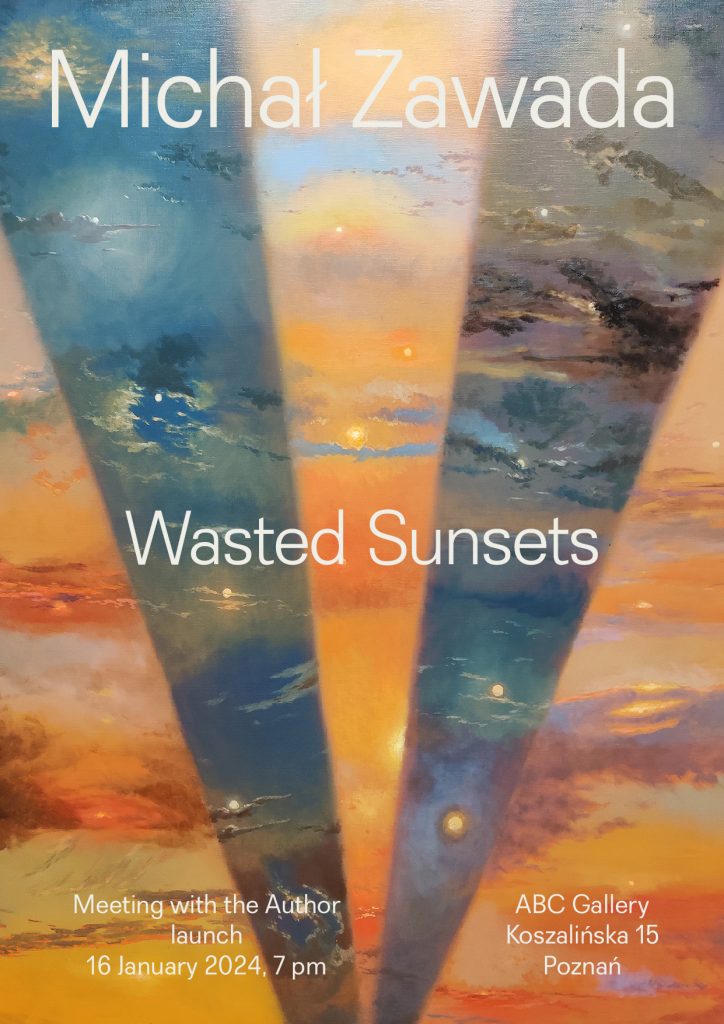

October 13, 2023

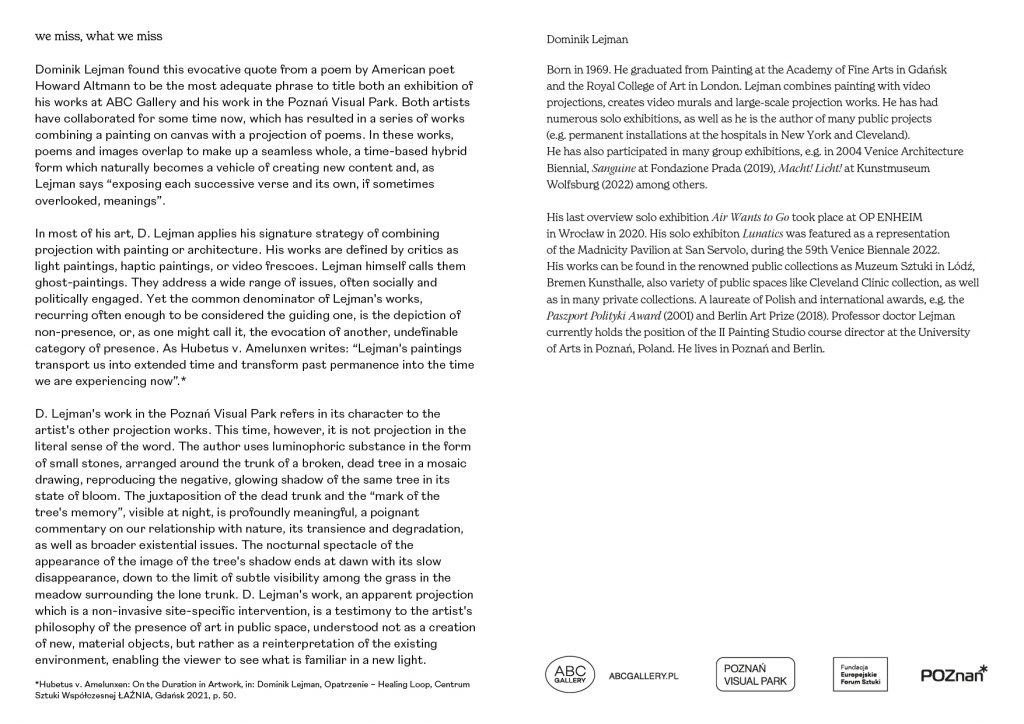
November 16, 2022
October 28, 2022
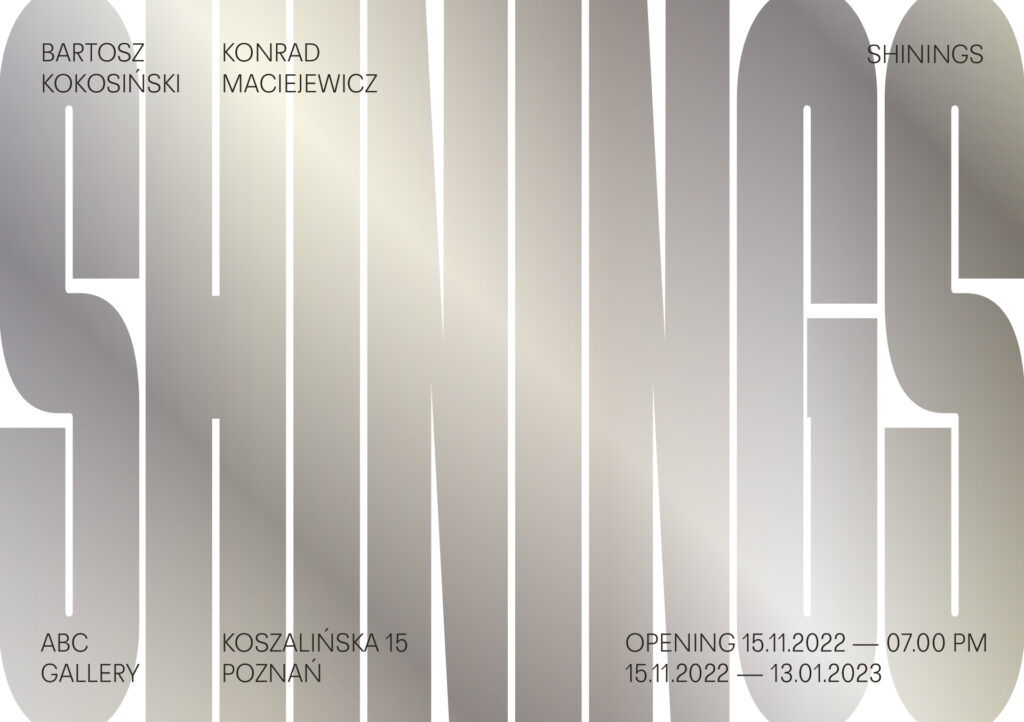
The project brings together explorations by two artists. Their common denominator is the metaphorical meaning of phenomena such as shining, mirroring and image multiplication. The authors intend their exhibition to generate that disturbing kind of shining experienced by Danny from Kubrick’s iconic horror movie, to which the project’s title refers. In the film, it was a moment of interpenetration of worlds, revealing what was deeply hidden. In July this year, the first instalment of The Shinings took place at the Inne Towarzystwo Gallery; the exhibition at ABC Gallery has been expanded to include additional paintings/objects.
Although each artist uses radically different means of expression, the works of both evoke similar emotional states in their viewers. The collages of Konrad Maciejewicz often deal with themes of death and the start of a new life. The artist cuts up existing cultural footage by using fragments of photographs from old magazines and juxtaposing them with pictures taken from the Internet. He truncates the human body, objects and architecture in order to assemble the whole into a new quality; the resultant complex symbolism is palimpsestic in nature. Maciejewicz’s works induce in the viewer a sense of curiosity mixed with awe, an effect characteristic of horror movies. The artist’s works can be interpreted in existential terms, as a metaphor for the terror of the individual alienated from the world, or of the alienated body. For The Shinings project, K. Maciejewicz has prepared a new set of works: print-outs on glass (portrait photographs and collages) and objects made from door leaves. In addition to their fairly obvious funerary associations, they connote transgression and entry into a different dimension.
Bartosz Kokosiński is recognised as an artist who primarily reflects on the phenomenon of painting. He is not interested in its illustrative aspect, but in the painting process itself, in the physicality of the matter from which the image is created. Therefore, he engages in a discourse with its conventions, often crossing the boundaries of painting and moving towards objects and installations. Kokosiński has created unique, recognisable and innovative formal strategies that are useful tools for reflecting on the status of painting and, indirectly, on the condition of contemporary humankind. The artist asks questions about the relationship between art and extra-artistic reality, embracing concepts such as hybrid, excess or overproduction. Kokosiński deforms his paintings, bending their structure, turning the canvases inside out and forcing various objects into them. His most recent series of works, some of which were created especially for the exhibition at ABC Gallery, are paintings either entirely or partially encased in resins. The shiny, transparent or semi-transparent resins act as double mirrors. They partially reveal what is “hidden” underneath, on the surface of the canvas, while simultaneously reflecting the surroundings: the architecture of the gallery, fragments of the exhibition, the image of the closest standing “viewer” and the other viewers. The artist often “smashes” his resin paintings-mirrors, additionally fragmenting the reflected image.
Kokosiński’s resin paintings in tandem with Maciejewicz’s portraits of the girl in the print-outs become corporeal. They seem to be gazing at the viewer, like her. The resin reciprocates the viewer’s gaze, but there is also something dead and funerary in its viscosity. It is like the remains of someone, a trace or a secretion. The brightly lit resin fragments reflect the light and dazzle, further complicating the image of the whole. The works by two artists overlap, appearing like echoes, intensifying the obsessive dark mood, creating a kind of visual labyrinth of mirrored and deformed images, images within images.
The mirror, the crooked or cracked/broken one, has extensive cultural connotations. For centuries, mirrors have been seen as magical objects, as conduits for crossing the line towards another dimension or making contact with the land of death. They are a symbol of truth, of a pure soul, of clarity of mind. They were believed to have a strong connection with the magic of the Sun and the Moon. They were an attribute of Aphrodite; sorcerers and magicians used their power to do magic, foretell the future and uncover the secrets of the past. When the path to the afterlife is opened before the soul of the deceased, the power of mirrors grows more intense. They were therefore turned upside down or screened to avoid seeing something not meant to be seen by the eyes of the living. One can fall in love in one’s own mirror reflection and turn into a flower (like Narcissus) or die because of it (like the basilisk). A vampire (who has no reflection) can still be recognised by means of a mirror. In the folk beliefs of Western Europe, mirrors were considered to be ominous objects that could accumulate both good and bad energy, the latter being insidiously transferred onto subsequent owners. Indian tribes of the Americas avoided mirrors in the belief that they have the power to seize human souls.
Nowadays, a mirror, especially a cracked or distorted one, which as in the case of The Shinings exhibition gives the effect of a multiplied or fragmented reflection, is associated with confusion, the inability to distinguish unequivocally between reality and its image. Uncertainty about the verifiability of our perception of the world, a split, or perhaps even a multiplication of the self, caused by an excess of images generated by contemporary culture, are the sensations and reflections evoked by Kokosiński and Maciejewicz’s exhibition. The Shinings is a peculiar study of madness, a poignant story about the isolation and loneliness of human beings trapped within the images of the world and their own, which self-multiply and, deformed, reproduce ad infinitum.
January 6, 2022
November 5, 2021

October 7, 2021
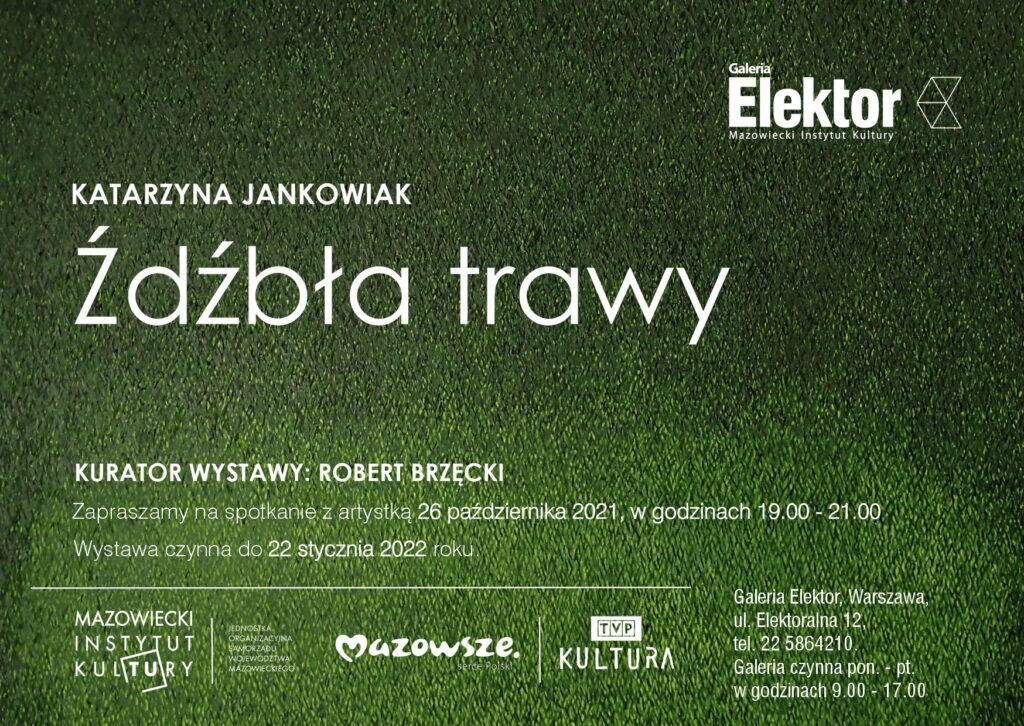
Leaves of Grass
The titles of my paintings are simply the dates of their completion. The works are a calendar of sorts; for me the use of dates seems perfectly adequate and sufficient. At this stage of my work, I find it unnecessary to apply narrative titles. Therefore, summing up with a title a set of works selected for the exhibition is a tall order, indeed. Eventually, I chose a quotation from Walt Whitman’s Leaves of Grass. I share the poet’s way of observing and then describing the world: the focus on detail, on trivial and inconspicuous things and phenomena which are so commonplace that they elude attention, even though each of them is an inalienable part of the whole. Whitman writes as follows:
I believe a leaf of grass is no less than the journey-work of the stars,
And the pismire is equally perfect, and a grain of sand, and the
egg of the wren.
(…)
And the cow crunching with depress’d head surpasses any statue,
And a mouse is miracle enough to stagger sextillions of infidels.1
I am a believer in the art of looking: staring, observing, absorbing, soaking up, stopping, and concentrating. I consider this way of looking and the time devoted to it an exceptional luxury in the context of the dominant, hastily mediated image of the world we all deal with in our everyday lives. I carefully watch many things, but especially nature; in general and in particular, i.e. forests, meadows, fields, orchards, as well as the most common weeds, their fruit, seeds and roots.
The oil paintings on display at the Elektor Gallery attempt to synthesise these observations, while the watercolours are a kind of herbarium inspired both by direct observations and by reference material taken from biology and botany textbooks.
While providing titles to works or exhibitions opens some interpretative horizons, it is also restrictive and limiting. My exhibition could just as well have been entitled Tansy, inasmuch as a fascination with this common ruderal weed, its disturbing smell, diffuse shape, healing and poisonous properties and the magical power attributed to it (tansy was considered a witch’s herb) inspired much of my work. The titles Time or Rhythm would be equally legitimate since the process of painting, the rhythm and repetitiveness of spatula or brush strokes is essential. Similarly fitting, for related reasons, would be titles such as Mantras or Meditations as well as Affirmations or The Passing, as my work is also about the passage of time and impermanence. I could also title my exhibition The World Fading Away or The World on the Edge as in the face of an environmental catastrophe I sometimes feel that I am referring to a world in a state of disappearance; soon I will have nothing to look at. The title could also refer to the dominant colour in this exhibition and its symbolic content.
For the time being, for now, I am most obliged to honourable Walter Whitman for the title of the Leaves of Grass show.




October 6, 2021
August 14, 2021
July 29, 2021

Edyta Hul "Currara" Opening: Friday 13.08.2021 06:00 P.M. Exhibition is open till 24.09.202`
May 19, 2021
November 10, 2020
October 22, 2020
Opening 3.11.2020, 18.00-21.00
Exibition opened: Tues. – Frid, 12.00 – 18.00
Till 8.12.2020

August 17, 2020
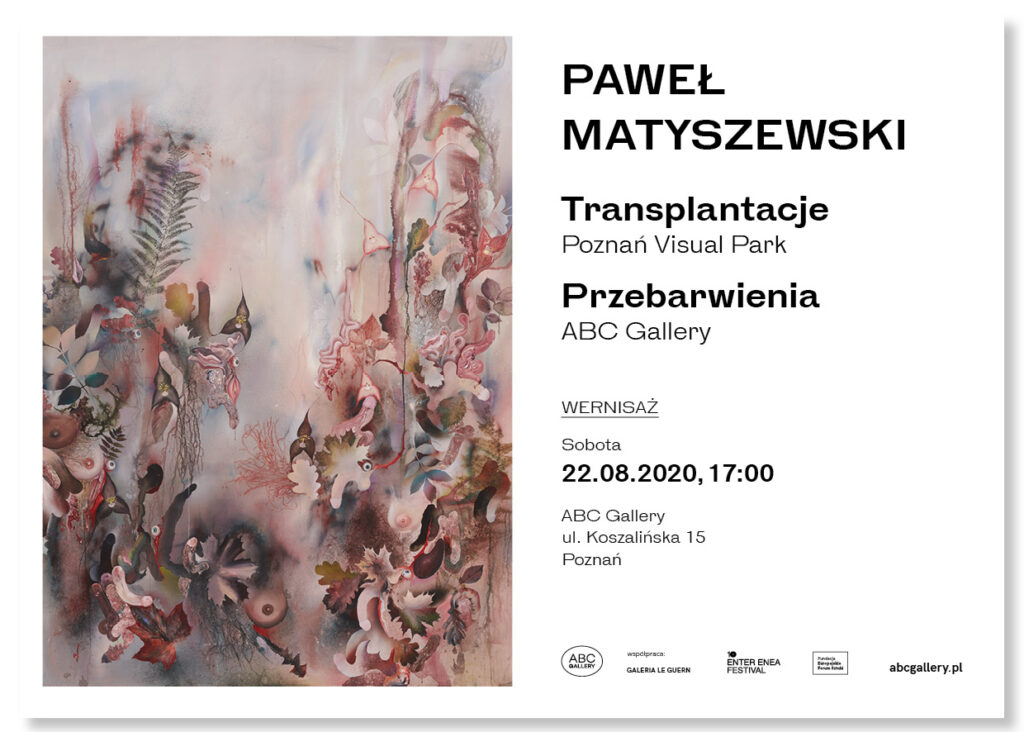
February 18, 2020
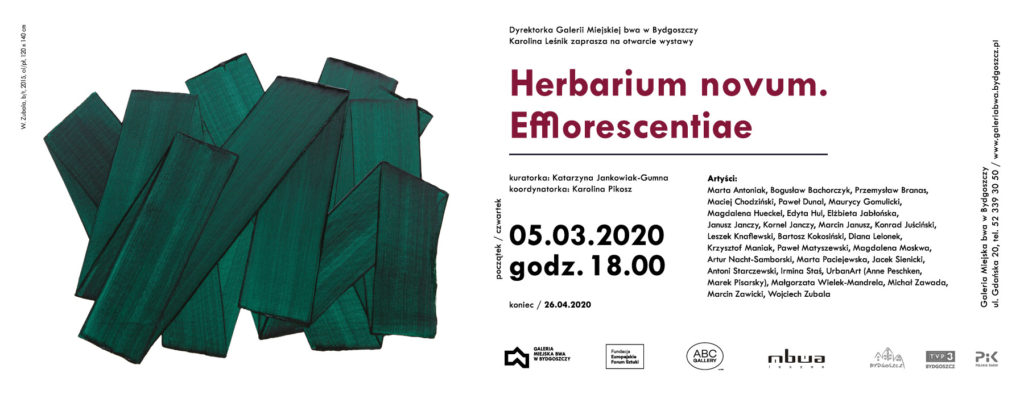
November 27, 2019
November 15, 2019
Launch 26.11.10, 7 PM
The exhibition will last until 7.01.2020
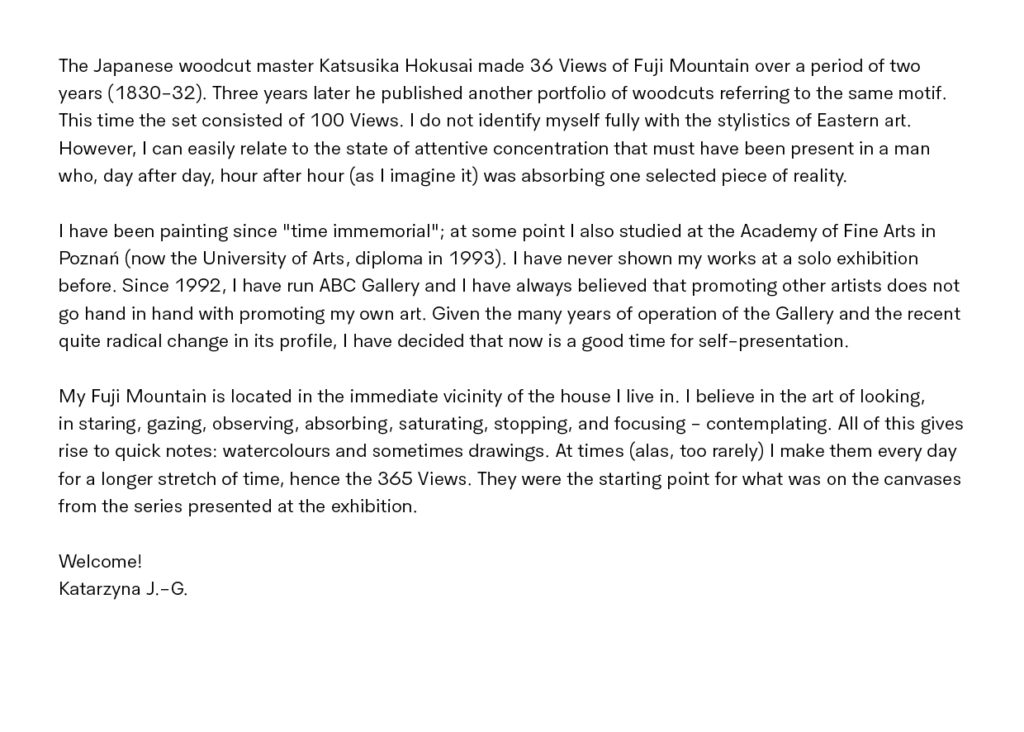

May 31, 2019
A land of Cockaigne (exhibition/ ABC Gallery, Poznań
Strzeszynek Wypoczynek (replica of a neon by Z. Kaja/ Poznański Park Rzeźby Visual Park
17 June 2019 – 20 July 2019
Launch 17 June 2019, 8 pm
The vast majority of collective shows of contemporary art organised these days addresses the questions that are central to the exhibition mottos. This seems only fit and proper: nearly all aspects of the present-day reality trigger dilemmas, provoke questions and generate debate. Art, one of the most sensitive seismographs of social and political life, finely tuned to catch the births of new ideas and of the demise of old ones, naturally responds to the oscillations, at times prophetically, at other times critically, fulfilling the demand of commitment and involvement.
The concept of the show titled “The Land of Milk and Honey” was born out of a longing for Matisse’s idea of “art as a comfortable armchair”, which is aesthetic, joyful and harmonious, a veritable feast for the eye and the spirit. The other inspiration was reflection on the question: “What is the mythical land of Cockaigne today? What is the present-day land of extreme luxury and ease, abundance and bliss?” The topics addressed by the works selected for the exhibition seemingly relate to the least problematic realm of human activity: relaxation, fun, entertainment, and recreation. Just like The Land of Cockaigne by Pieter Bruegel, each object on display hides its invisible part behind the aesthetically pleasing façade. The legendary “Land of Cockaigne” in the context of the worship of youth and the omnipresent pursuit of unending and unconditional wellness & fitness once more proves to be an unattainable utopia.
The exhibition will have its very significant annex – another object to be unveiled on the same day on the premises of the Poznań Visual Park in the immediate vicinity of The ABC Gallery building. This will be a replica of a monumental neon by the late Zbigniew Kaja, an eminent graphic artist, author of stage sets, co-founder of the Polish school of poster. The Strzeszynek – Wypoczynek neon, with motifs of landscape and water sports (lake waves, the sun, a sailing boat) was made in the mid-1970s on a wall of a house at the intersection of Hetmańska and Głogowska streets in Poznań. In the 1980, it was taken down and destroyed beyond repair. The replica is being made on the basis of very few extant black-and-white photographs.
Katarzyna Jankowiak-Gumna
